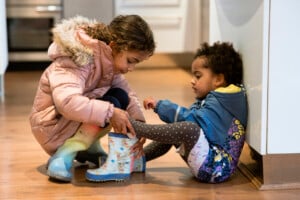Parenting is a balancing act. You’re constantly trying to figure out how to do it all while being present for your kids and giving them the best life possible. It can feel overwhelming to think about everything on our to-do list in a single day, including incorporating learning and language development during everyday routines.
Daily routines provide a rich and natural environment for language learning, offering numerous opportunities for parents and caregivers to engage and interact with their little ones. Whether during bath time, mealtime, or even a trip to the grocery store, by incorporating simple strategies, parents can expose their babies and toddlers to a wide range of vocabulary and encourage conversation. Let’s explore some fun ways to incorporate language development during everyday routines.1,2,3
Incorporate Language Development During Bath Time
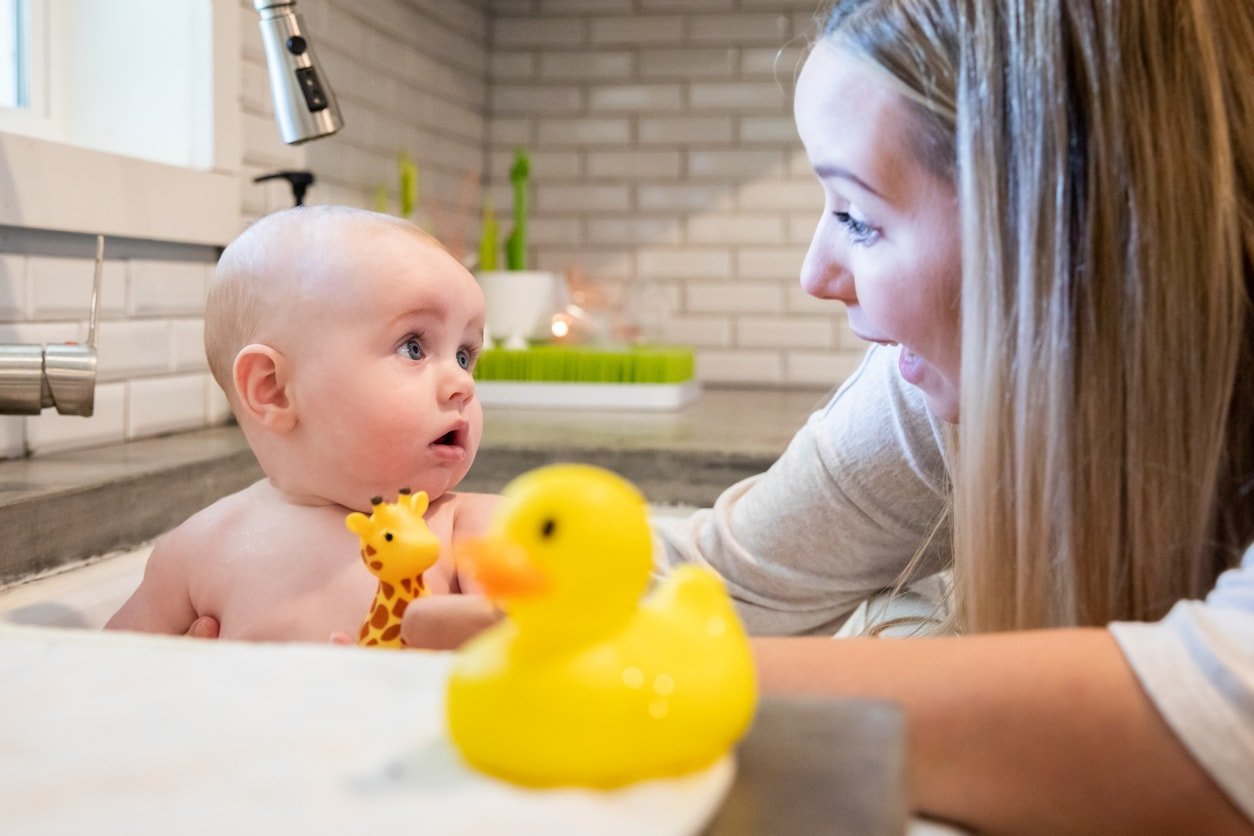
Bath time is an excellent opportunity to promote language development in babies and toddlers. As you prepare for bath time, engage your little one in conversation, describing each step of the process. Talk about how you turn the water on and describe how “the tub fills up up up.” Use simple, repetitive words like “water,” “soap,” and “bubbles” to introduce new vocabulary. Target functional words like “on,” “in,” and “more” with bath time routines like pumping soap and dumping water from a cup. Sing songs or nursery rhymes while bathing, incorporating actions and gestures to make it interactive. Point out body parts, name them as you wash, and encourage your baby to mimic your sounds. Utilize bath toys as conversation starters, discussing their colors, shapes, and textures.
Use Mealtime for Conversation
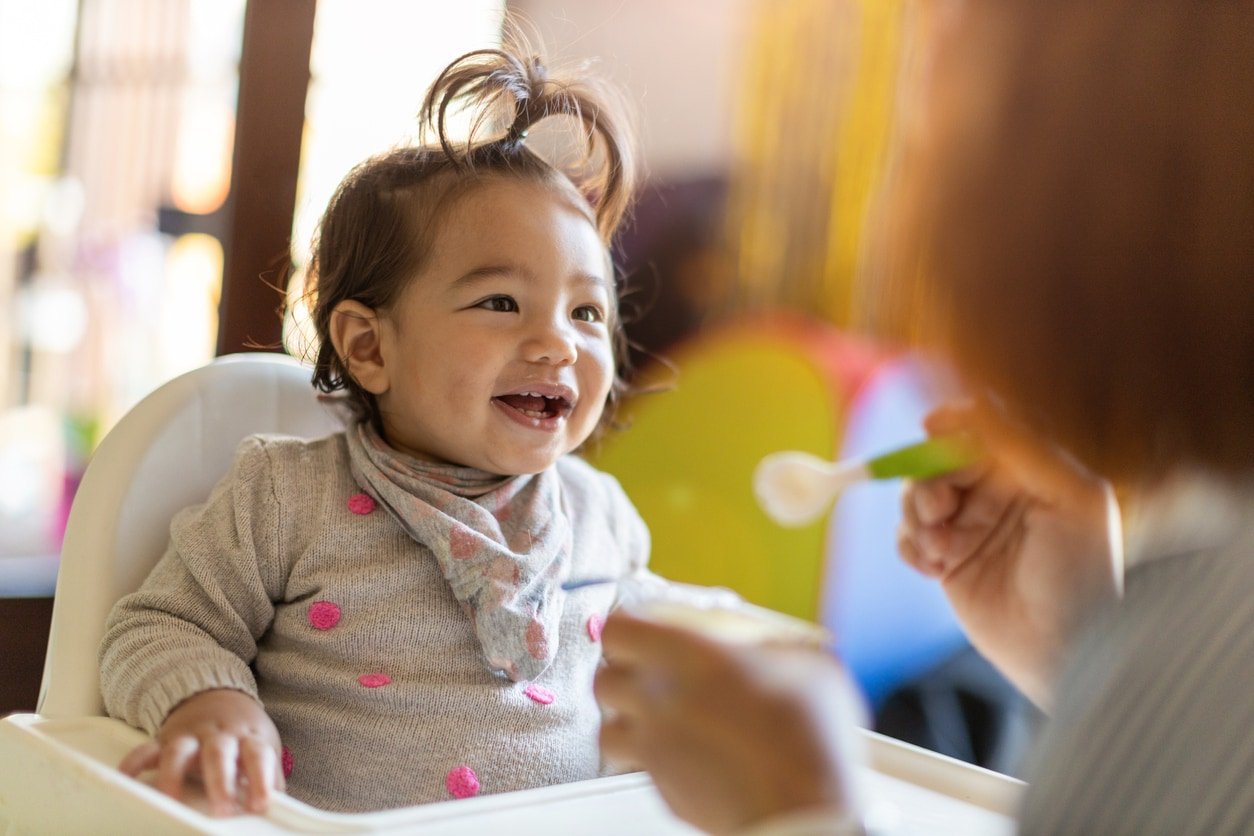
Using mealtime as a vessel for targeting language can be fun and functional for kids of all ages. Start your conversation in the kitchen as you prepare the meal. As you sit down for a meal together, start by labeling the food and any condiments. Encourage your baby to imitate the sounds you make or attempt to say the words themselves. Use mealtime as a chance to introduce new vocabulary related to food, such as tastes (“sweet,” “sour”), textures (“crunchy,” “soft”), and colors.
Always try to incorporate functional words like “more,” “give me,” and “put here.” As your child grows, engage in back-and-forth communication by asking questions like, “How does your banana taste?” or “Mommy has chicken; what do you have on your plate?”
Describe Activity During Diaper Changes
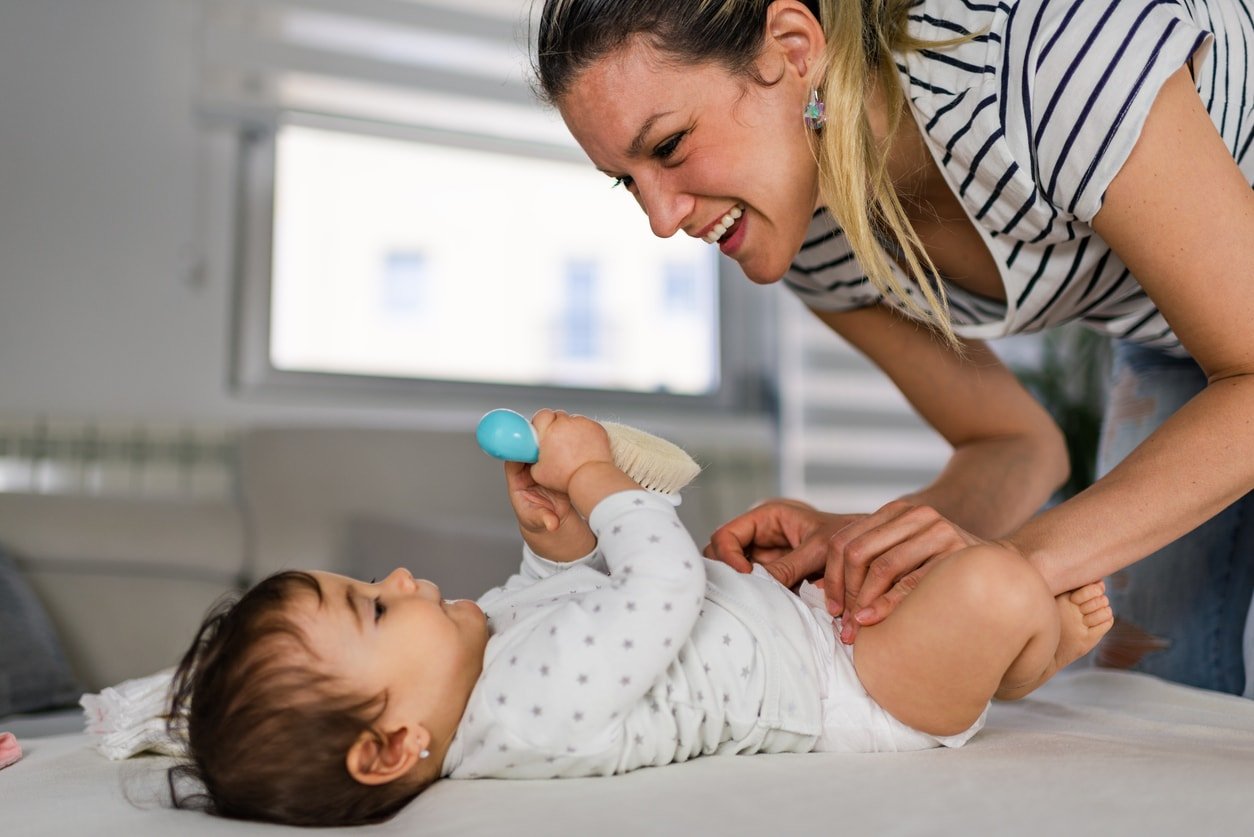
As you attend to your baby’s diapering needs, engage them in conversation and describe what you’re doing step by step. Use simple words and phrases such as “diaper,” “clean,” and “wipe.” Sing songs or nursery rhymes to make the experience more enjoyable and interactive. While the baby is lying down, identify parts of their face, pointing and labeling back and forth with yours, “Mommy’s eyes . . . baby’s eyes.”
Be silly and teach your baby to describe words like “stinky” or “dirty,” as they may show signs that they are ready for potty training. Encourage your baby to imitate your sounds or gestures, fostering their communication skills. Making diaper time fun can create language-rich moments, help distract from a potentially non-preferred activity for your baby, and keep them entertained.
Incorporate Language Development at the Grocery Store
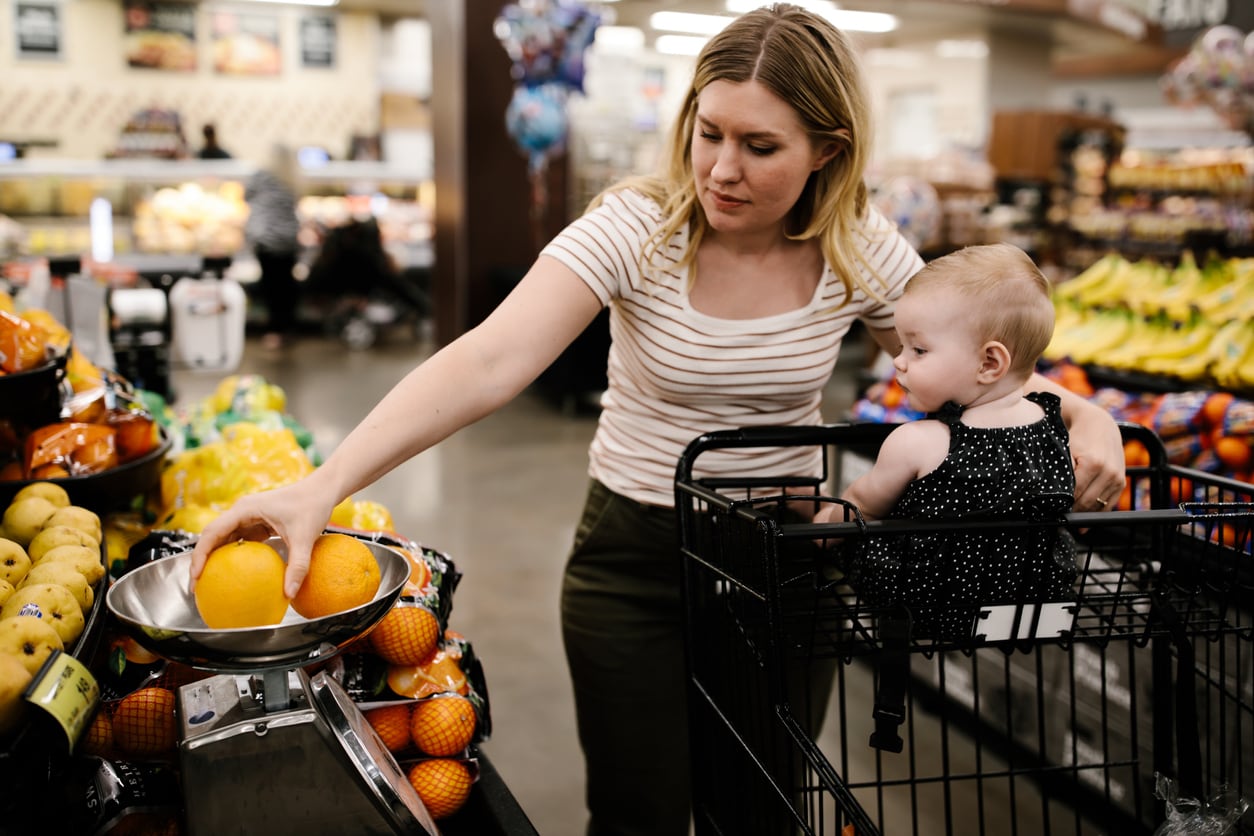
The grocery store can be ideal for promoting babies’ language development. As you navigate the aisles, engage your little one in conversation, pointing out different items and describing them. Introduce vocabulary by labeling all the store sights, including the food, colors, carts, and people. Encourage your baby to observe and listen to the sounds of the store, such as the rustling of bags or the hum of the shopping cart. Talk about the colors, sizes, and shapes of the products you encounter, fostering their understanding of descriptive language.
Encourage your baby to interact by pointing at or reaching for items and responding to their communication attempts. As your child grows, target following directions by allowing them to participate in the shopping routine, like taking items off the shelf and putting food in the cart. Turning the grocery store into a language-rich environment provides a valuable opportunity for your baby to absorb new words and concepts while doing a routine errand into a fun and engaging learning experience.
Narrate While Driving

The car can be a miserable place to be with a baby. One way to distract children and keep them calm while driving and promote language development is talking to them while on a trip in the car. While driving, engage your little one in conversation, narrating the journey and describing the things you see outside the window. Point out familiar objects like trees, houses, or cars. Sing nursery rhymes or play children’s songs, encouraging your baby to join in with simple sounds or gestures. As your child grows, target descriptive language about the things you see, like sizes, colors, and sounds.
Incorporating language development into everyday routines for our babies doesn’t have to be complicated. Some of the most valuable ways to promote your baby’s development can be done while simply just living life. Remember always to try and talk to your little one about what you are doing, describe what you see, and make your routines as fun and engaging as possible. Your child’s magical little brain will do the rest.















